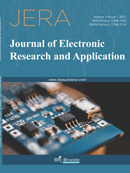Abstract
Lithium battery has recently gained more and more attention worldwide. It has wide usage that range from toys to electric cars. Choosing a suitable material that best fits the overall performance as electrode for the battery is very essential. For cathode material, apart from the traditional and widely-used LiCoO2, LiFePO4 and so on, there are innovations that include the use of V2O5. Researches have been done focusing on how to further improve the performance for V2O5 cathode in terms of different structure, forms or combination with other chemical molecules. This research paper will make a summary of the materials derived from traditional V2O5 as well as their performances.
References
Hatchard TD, Dahn JR, 2004, J. Electrochem. Soc, 151(6): A838.
Marom R, Amalraj SF, Leifer N, et al., 2011, A Review of Advanced and Practical Lithium Battery Materials. Journal of Materials Chemistry, 21(27): 9938-9954.
Karapidakis E, Vernardou D. n.d., Topic review Vanadium Oxides Subjects, Chemistry, Applied View times: 18.
Tomaszewska A, Chu Z, Feng X, et al., 2019, Lithium-ion Battery Fast Charging: A Review. E Transportation, 1: 100011.
Gu, Gang, et al., 2003, “V2O5 Nanofibre Sheet Actuators.” Nature Materials, 2(5): 316-319.
Gamze Y, Chun X, Lu, 2016, “High?Performance Solid?State Supercapacitors Based on V2O5/Carbon Nanotube Composites.” Chem Electro Chem, 3(1): 158-164.
Zhu Y, et al., 2020, “V2O5 Textile Cathodes with High Capacity and Stability for Flexible Lithium?Ion Batteries.” Advanced Materials, 32(7): 1906205.
Sun Y, Xie Z, Li Y, 2018, “Enhanced Lithium Storage Performance of V2O5 with Oxygen Vacancy.” RSC Advances, 8(69): 39371-39376.
Khemchand D, et al., 2012, “Synthesis and Characterization of Self-Assembled Nanofiber-Bundles of V2O5: Their Electrochemical and Field Emission Properties.” Nanoscale, 4(2): 645-651.
Roberta V, et al., 2018, “On the Strange Case of Divalent Ions Intercalation in V2O5.” Journal of Power Sources, 407: 162-172.
Zhao EL, et al. 2019, “Electrochemical Performance of Li2O-V2O5-SiO2-B2O3 Glass as Cathode Material for Lithium Ion Batteries.” Journal of Materiomics, 5(4): 663-669.
Liu D, et al., 2011, “Enhanced Lithium-Ion Intercalation Properties of V2O5 Xerogel Electrodes with Surface Defects.” The Journal of Physical Chemistry C, 115(11): 4959-4965.
Huguenin F, Martins AR, Torresi RM, 2018, Nanocomposites from V2O5 and Lithium-Ion Batteries. In Nanoenergy, Springer, Cham, 223-249.
Huguenin F, Torresi RM, Buttry DA, 2002, Lithium Electro-Insertion into an Inorganic-Organic Hybrid Material Composed from V2O5 and Polyaniline, J Electrochem Soc, 149: A546.
